Marigolds are beautiful, vibrant flowers that are easy to grow and make a perfect addition to any garden. Collecting and growing their seeds is a rewarding process that allows you to enjoy their blooms year after year. Whether you’re an experienced gardener or just starting out, learning how to gather marigold seeds can save money and ensure a steady supply of these cheerful flowers for your garden.
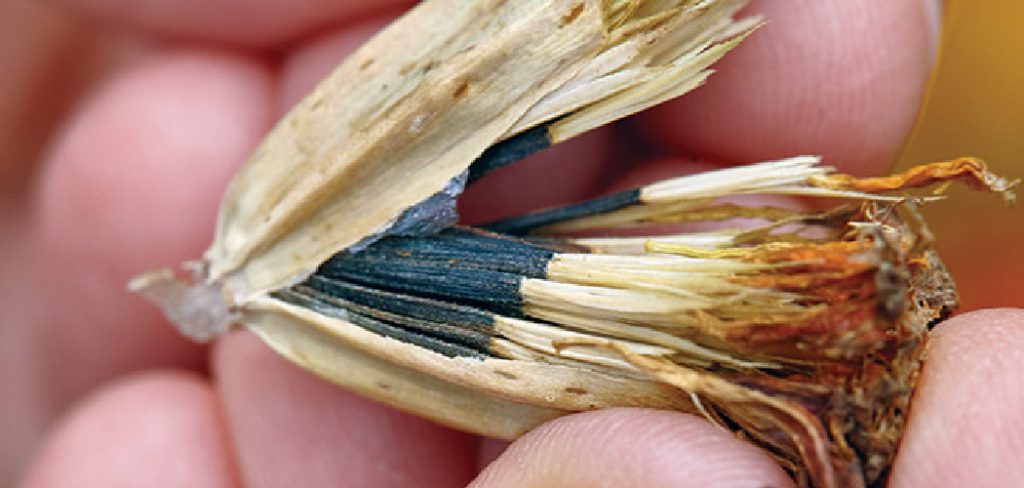
This guide on how to get marigold seeds will walk you through the simple steps to harvest, store, and plant marigold seeds successfully.
Understanding Marigold Seed Formation
Marigold seeds are formed after the flowers bloom and begin to wither. Once the vibrant petals fade, the flower head starts to dry out, and the seeds develop within it. These seeds are long, slender, and typically black and white in color, making them easily distinguishable. The drying process is crucial for seed maturation, as it ensures that the seeds are fully developed and ready for harvesting.
Understanding this natural cycle helps gardeners identify the right time to collect seeds, ensuring better germination rates and healthier plants in the next growing season.
When to Harvest Marigold Seeds?
The ideal time to harvest marigold seeds is after the flower heads have completely dried on the plant. Typically, this occurs a few weeks after the petals have withered and fallen off. Look for seed heads that are brown, dry, and brittle to the touch, as these indicate that the seeds inside are fully mature.
Harvesting too early, when the flower heads are still green or slightly damp, may result in poorly developed seeds with lower viability. Once you’ve identified the dried seed heads, gently remove them from the plant, being careful to avoid damaging the seeds within. Proper timing during the harvest ensures robust and productive marigold plants in the next growing season.
Tools & Materials Needed
- Garden Scissors or Pruners
- Paper Bags or Envelopes
- Tray or Paper Towel for Drying Seeds
- Labels or Markers
8 Step-by-Step Guides on How to Get Marigold Seeds
Step 1: Identify the Dried Seed Heads
Start by examining your marigold plants to find the seed heads that are ready for harvest. Look for flower heads that have fully dried out and turned brown or tan in color. These are typically located where the blooms once were and should feel crisp to the touch.
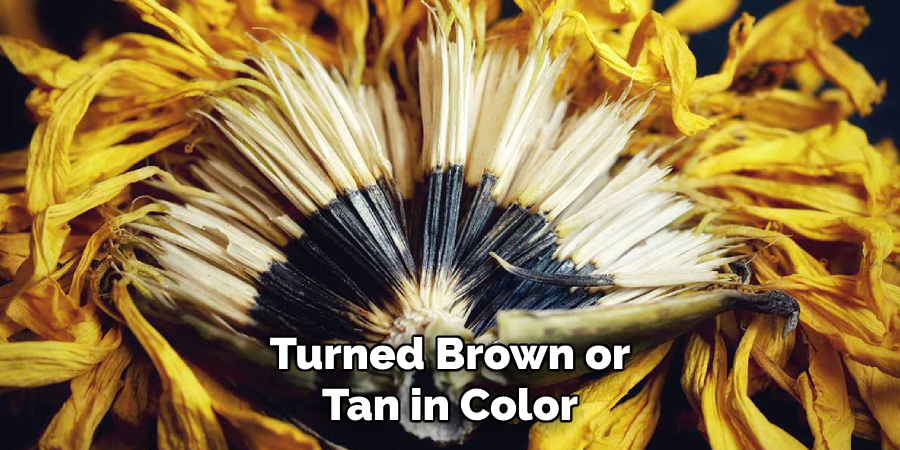
Avoid harvesting any green or partially dried heads, as the seeds inside may not yet be mature. Carefully inspect the plant to ensure you are selecting only the most viable seed heads for collection.
Step 2: Cut Off the Dried Seed Heads
Once you’ve identified the dried seed heads, it’s time to remove them from the plant. Using a pair of sharp gardening scissors or pruning shears, carefully cut the stem just below the base of the seed head.
Be gentle to avoid shaking loose any seeds during the cutting process. Hold a container or bag underneath the flower head to catch any seeds that may fall as you work. This ensures that you don’t lose any valuable seeds and keeps your workspace tidy. Continue this process until you’ve collected all the desired seed heads from your marigold plants.
Step 3: Place the Seed Heads in a Paper Bag
Once you’ve collected the seed heads, transfer them carefully into a paper bag. Using a breathable material like paper helps prevent moisture buildup, which can cause mold and damage the seeds.
Label the bag with the date and type of seeds for easy identification later. Store the bag in a cool, dry place to allow the seed heads to dry completely before extracting the seeds. This step is essential to ensure that the seeds remain viable for future planting.
Step 4: Label the Paper Bag
To stay organized, label the paper bag with key details about your seeds. Include the plant name, seed variety, and the date of collection. This information will help you track the seeds’ origin and ensure they are used at the right time for planting.
Accurate labeling is especially important if you are collecting seeds from multiple plants, as it prevents confusion and enables you to plan your garden efficiently.
Step 5: Store in a Cool, Dry Place
Proper storage is crucial to maintain the viability of your seeds. Place the labeled paper bag in a location that is cool, dry, and away from direct sunlight. Ideal storage spots include a pantry, a basement, or even the refrigerator if humidity levels are controlled.
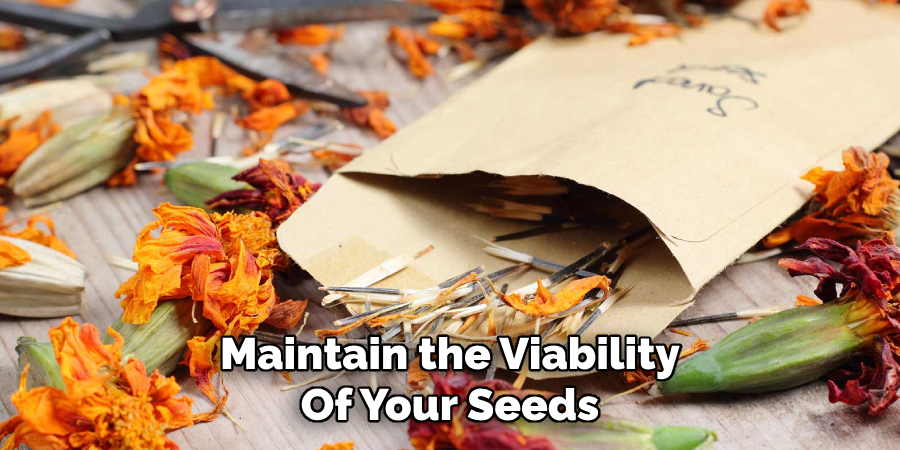
Avoid areas with high heat or moisture, as these conditions can cause the seeds to deteriorate or become moldy. By storing them correctly, you can ensure your seeds remain ready for planting when the time comes.
Step 6: Check on the Seeds Regularly
Even when stored properly, it’s essential to check on your seeds periodically to ensure they remain in good condition. Inspect the storage container for any signs of moisture, mold, or pests. If you notice any issues, address them immediately to prevent further damage.
Regular checks also provide an opportunity to monitor the seed viability over time, ensuring they will still germinate effectively when you’re ready to plant. Frequent monitoring is a key step in maintaining the quality of your seeds for future use.
Step 7: Planting Your Marigold Seeds
When it’s time to plant your marigold seeds, choose a location that receives ample sunlight, as marigolds thrive in warm, bright conditions. Begin by preparing the soil, ensuring it is well-draining and enriched with organic matter for optimal growth. Create shallow furrows or holes in the soil, spacing them about 1-2 inches apart.
Place the seeds carefully into the soil, covering them lightly with a thin layer of dirt, approximately ¼ inch deep. Water the area gently to moisten the soil without creating puddles. With proper care, your marigold seeds will begin to germinate within 5-7 days, bringing vibrant blooms to your garden in no time.
Step 8: Saving Seeds from Your Own Plants
Once your marigolds have matured and begun blooming, you can collect seeds from the dried flower heads to plant in the future. Start by identifying fully dried and brittle flower heads on the plant—these will usually be brown in color and easy to snap off.
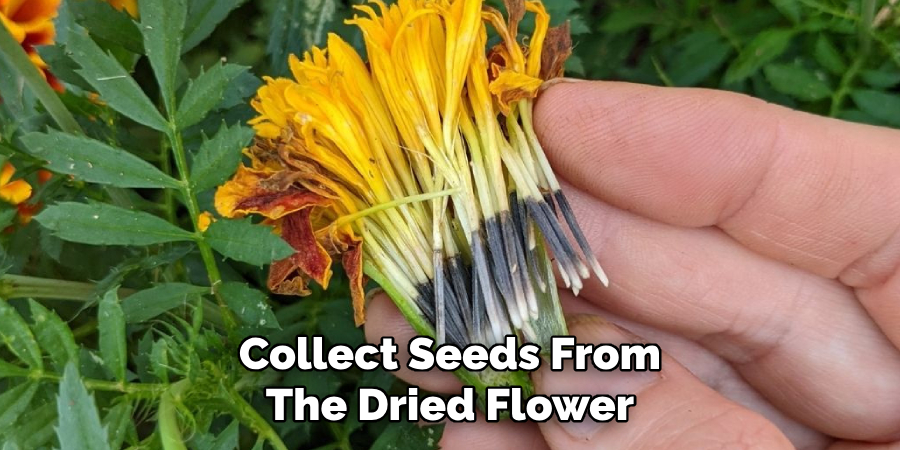
Carefully remove the heads from the plant and pull them apart to reveal the slender, black-and-white seeds inside. Allow the seeds to air dry completely for a few days to prevent mold. Store the dried seeds in a labeled envelope or an airtight container in a cool, dry place until you’re ready to use them. Harvesting seeds not only helps save money but also enables you to enjoy your favorite blooms year after year.
Following these steps on how to get marigold seeds from your garden will ensure a successful harvest and the opportunity to grow even more beautiful flowers in the future.
Additional Tips
Choose Healthy Plants:
Select the healthiest and most vibrant marigold plants in your garden for seed harvesting to ensure strong and robust plants in the next growing season.
Avoid Hybrid Varieties:
If you want to produce plants similar to the parent, avoid harvesting seeds from hybrid varieties, as they may not grow true to the original plant.
Harvest During Dry Weather:
Collect seedheads on a sunny, dry day to prevent moisture-related issues like mold or mildew.
Label Clearly:
Always label your stored seeds with the variety and date of collection to keep your seed-saving efforts organized.
Rotate Crops:
To maintain healthy marigold growth and prevent soil-borne diseases, consider rotating planting locations for your marigolds each year.
By incorporating these tips, you can enhance your gardening success and continue enjoying the cheerful beauty of marigolds in your outdoor space.
Frequently Asked Questions
Q1: Can I Save Seeds From Hybrid Marigold Plants?
A1: Yes, but the resulting plants may not display the same characteristics as the parent plant. It is recommended to save seeds from open-pollinated or heirloom varieties for consistent results.
Q2: How Long Can Marigold Seeds Be Stored Before Planting?
A2: Marigold seeds can generally be stored for 3-5 years in a cool, dry location before planting.
Q3: Do Marigolds Attract Bees and Other Pollinators?
A3: Yes, marigolds are known to attract bees and other beneficial pollinators to your garden. They also repel some harmful insects such as aphids and whiteflies.
Q4: Can I Use Marigolds in Cooking or for Medicinal Purposes?
A4: While marigolds have been traditionally used in cooking and herbal remedies, it is important to note that not all varieties are safe for consumption. It is best to research the specific variety of marigold before using it for any edible or medicinal purposes.
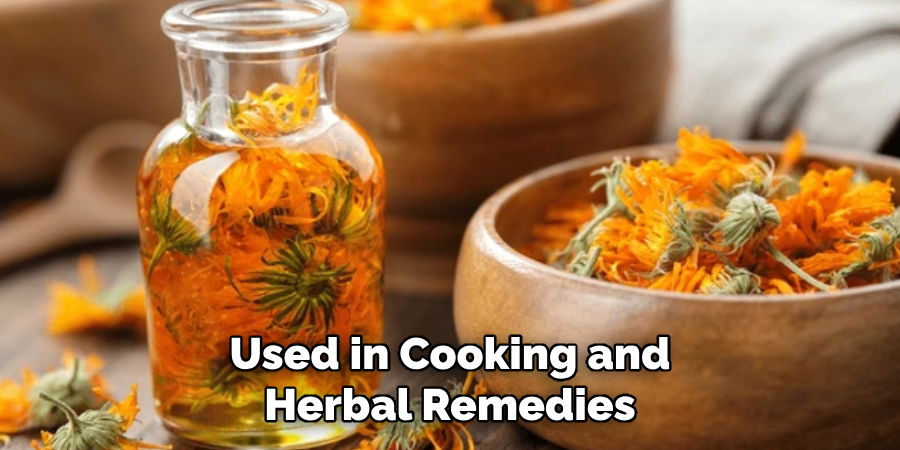
Conclusion
Marigolds are versatile and vibrant flowers that can offer numerous benefits, from enhancing the beauty of your garden to supporting pollinators and repelling pests. While they may also have culinary and medicinal uses, it is essential to thoroughly research their specific varieties before use.
By incorporating marigolds into your garden, you can enjoy their vivid colors, pleasant aroma, and practical advantages, making them a valuable addition to any outdoor space. Thanks for reading this article on how to get marigold seeds.
About
Jennifer Branett is a distinguished figure in the world of Garden design, with a decade of expertise creating innovative and sustainable indoor solutions. His professional focus lies in merging traditional craftsmanship with modern manufacturing techniques, fostering designs that are both practical and environmentally conscious. As the author of garden, Jennifer delves into the art and science of garden-fix, inspiring artisans and industry professionals alike.
Education RMIT University
(Melbourne, Australia) Associate Degree in Design (Jennifer Branett) Focus on sustainable design, industry-driven projects, and practical craftsmanship. Gained hands-on experience with traditional and digital manufacturing tools, such as CAD and CNC software.
Nottingham Trent University
(United Kingdom) Bachelor’s in Garden and Product Design (Honors) Specialized in product design with a focus on blending creativity with production techniques. Participated in industry projects, working with companies like John Lewis and Vitsoe to gain real-world insights.Publications and Impact
In indoor, Jennifer Branett his insights on Garden design processes, materials, and strategies for efficient production. His writing bridges the gap between artisan knowledge and modern industry needs, making it a must-read for both budding designers and seasoned professionals.
